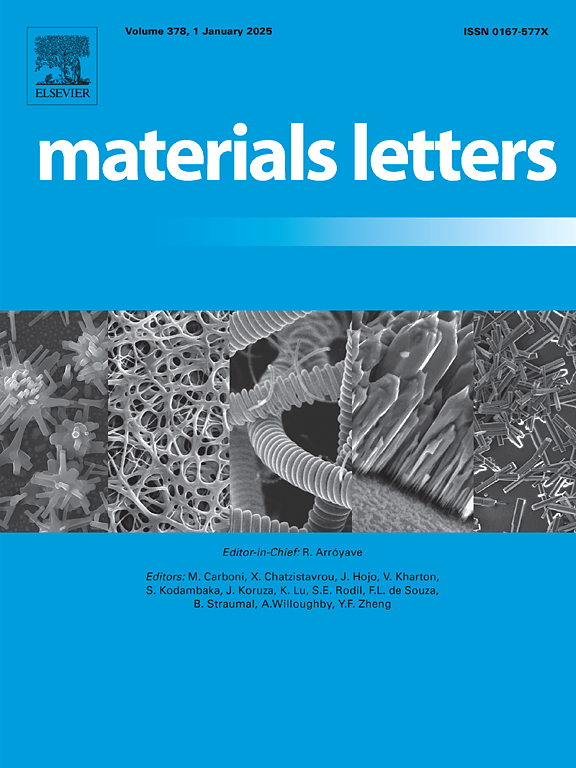基于BP神经网络建模的690mpa钢低温韧性定向焊丝设计与试验验证
IF 2.7
4区 材料科学
Q3 MATERIALS SCIENCE, MULTIDISCIPLINARY
引用次数: 0
摘要
为满足高强度钢结构在极端低温条件下对焊接接头强度和韧性的严格要求,提出了一种基于BP神经网络的690 mpa级低温高韧性焊丝的智能合金设计方法。收集了包含104组焊丝成分和相应的- 50°C冲击能值的数据集。以合金元素为输入变量,以低温冲击韧性为输出目标,建立了预测模型。通过贝叶斯正则化算法对模型进行训练优化。基于多种性能指标,选择最准确的模型结构来预测焊丝的最佳成分范围。根据预测的成分制备实验焊丝,并采用气体保护金属弧焊工艺进行焊接试验。结果表明:沉积金属主要由晶粒细化的针状铁素体组成,具有优异的力学性能;- 50℃时的平均冲击能达到87 J,与预测值基本吻合。进一步的TEM、EBSD和XRD分析揭示了微观组织细化和碳化物强化的协同强化机制。该方法为高强度、高韧性平衡焊丝的智能化设计提供了广阔的应用前景。本文章由计算机程序翻译,如有差异,请以英文原文为准。
Design and experimental validation of a low-temperature toughness-oriented welding wire for 690 MPa steel via BP neural network modeling
To meet the stringent requirements for strength and toughness of welded joints in high-strength steel structures operating under extreme low-temperature conditions, this study proposes an intelligent alloy design method for 690 MPa-class low-temperature high-toughness welding wire based on a BP neural network. A dataset comprising 104 sets of welding wire compositions and corresponding impact energy values at −50 °C was collected. A predictive model was constructed using alloying elements as input variables and low-temperature impact toughness as the output target. The model was optimized through training with a Bayesian regularization algorithm. Based on multiple performance metrics, the most accurate model structure was selected to predict the optimal composition range for the welding wire. Experimental wires were fabricated according to the predicted compositions and subjected to welding trials using the gas metal arc welding process. The results demonstrated that the deposited metal primarily consisted of acicular ferrite with refined grain structures, exhibiting excellent mechanical properties. The average impact energy at −50 °C reached 87 J, closely matching the predicted value. Further analyses using TEM, EBSD, and XRD revealed a synergistic enhancement mechanism involving microstructural refinement and carbide strengthening. This work indicates that the proposed method offers promising potential for the intelligent design of welding wires with well-balanced high strength and toughness.
求助全文
通过发布文献求助,成功后即可免费获取论文全文。
去求助
来源期刊

Materials Letters
工程技术-材料科学:综合
CiteScore
5.60
自引率
3.30%
发文量
1948
审稿时长
50 days
期刊介绍:
Materials Letters has an open access mirror journal Materials Letters: X, sharing the same aims and scope, editorial team, submission system and rigorous peer review.
Materials Letters is dedicated to publishing novel, cutting edge reports of broad interest to the materials community. The journal provides a forum for materials scientists and engineers, physicists, and chemists to rapidly communicate on the most important topics in the field of materials.
Contributions include, but are not limited to, a variety of topics such as:
• Materials - Metals and alloys, amorphous solids, ceramics, composites, polymers, semiconductors
• Applications - Structural, opto-electronic, magnetic, medical, MEMS, sensors, smart
• Characterization - Analytical, microscopy, scanning probes, nanoscopic, optical, electrical, magnetic, acoustic, spectroscopic, diffraction
• Novel Materials - Micro and nanostructures (nanowires, nanotubes, nanoparticles), nanocomposites, thin films, superlattices, quantum dots.
• Processing - Crystal growth, thin film processing, sol-gel processing, mechanical processing, assembly, nanocrystalline processing.
• Properties - Mechanical, magnetic, optical, electrical, ferroelectric, thermal, interfacial, transport, thermodynamic
• Synthesis - Quenching, solid state, solidification, solution synthesis, vapor deposition, high pressure, explosive
 求助内容:
求助内容: 应助结果提醒方式:
应助结果提醒方式:


